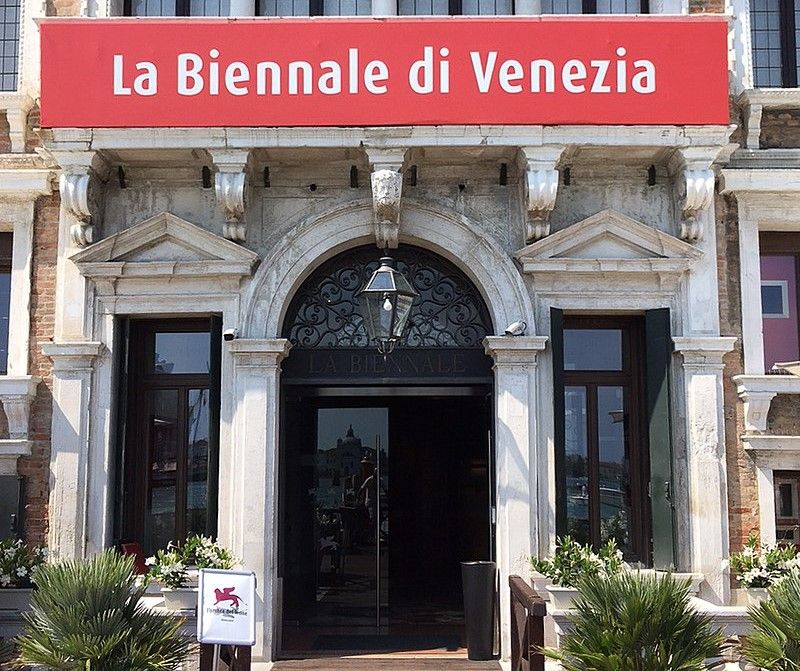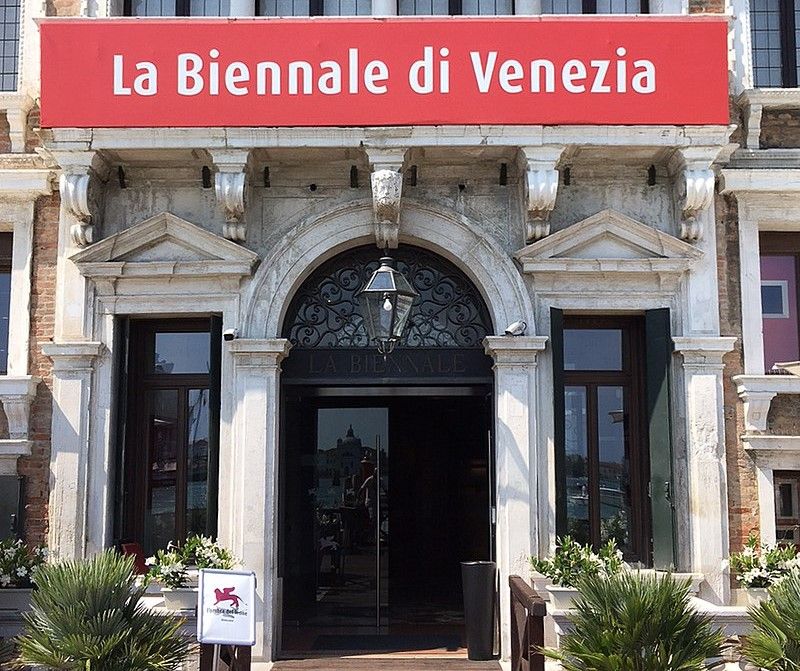Massimo Bartolini at La Biennale di Venezia? Yes! The Venice Biennale, a renowned stage for contemporary art, welcomes this year the eclectic talent of artist Massimo Bartolini.
Originally from Cecina, in the province of Livorno, Bartolini brings to the forefront his unique vision that blends architecture and music into an unprecedented sensory experience.
A history of success: Bartolini's previous participations

The Italian Pavilion, under the auspices of the Ministry of Culture's General Directorate for Contemporary Creativity, hosts Bartolini's work “Due qui/To Hear,” masterfully curated by Luca Cerizza.
The installation offers a total immersion in the artist's world, where architectural forms blend harmoniously with the melody of music, creating a compelling and evocative dialogue.
Past experiences: Bartolini at the Biennale
But this is not the first time Bartolini has performed at the Venice Biennale. His presence dates back to 1999, when he met the distinguished curator Harald Szeemann at Massimo De Carlo's gallery.
From there he began a journey that has seen him featured in numerous subsequent editions.
Innovation and creativity: Bartolini in time
In 2001, under the curatorship of Pier Luigi Tazzi and Fabio Cavallucci, Bartolini presented a work in the evocative setting of the bombard garden, transforming the space into an oasis of interaction with a white bar that opened and closed like an oyster.
Exploring new horizons: Bartolini in 2009 and 2013
2009 marked another significant milestone for Bartolini at the Biennale, with an invitation from Dara Birnbaum to build a multimedia room, and a proposal to contribute to the Nordic Pavilion, curated by Elmgreen & Dragset.
Here, Bartolini surprised the audience with an oblique floor that distorted the perception of the works displayed in the garden.
In 2013, at the invitation of curator Bartolomeo Pietromarchi, Bartolini tackled a new and challenging project, taking over a residual space from the previous Architecture Biennale.
Here he created an unusual pathway dotted with bronze rubble and viaticals on the walls, offering the public a unique visual and tactile experience.
Bartolini's journey continues: The future at the Venice Biennale 2024
Massimo Bartolini's work continues to surprise and fascinate international audiences, demonstrating his ability to reinvent himself and create profound connections between art, architecture and music. His participation in the 2024 Venice Biennale promises to be another memorable moment in contemporary art.
Massimo Bartolini at La Biennale di Venezia: A new experience in art and creative collaboration
In this edition of the Venice Biennale, Massimo Bartolini has embarked on an artistic journey that has taken the contemporary art experience to new heights.
If there is anything new that this Biennale has brought to his personal experience, it is the enormous media impact generated around his work, unprecedented compared to all the other exhibitions he has participated in.
Responsibility and creativity: The approach to work at the italian pavilion
Facing the creation of an exhibition where one is the only artist representing a nation was a great responsibility for Bartolini.
The artist conceived the entire space with the intention of showing it in its nakedness, trying to connect the two large rooms of the Italian Pavilion to the garden with music.
The double opening, expressing circularity, evokes an absence of hierarchy that connects the three works freely.
Collaboration and sharing: The project with other artists
The creation of the work at the Italian Pavilion involved collaboration with other artists, a practice Bartolini welcomes with enthusiasm.
For him, conceiving a work as a welcoming place to host other artists is essential.
As happens in jazz music, Bartolini invites other artists to create a kind of artistic jam session, where everyone contributes their own vision and skill, influencing and enriching the overall project.
The relationship with the audience: A dance of participation and observation
For Bartolini, the viewer is the catalyst that makes the work visible, the “participant-observer” as defined by William. S. Wilson.
The artist hopes that the audience, lulled by the sound and his footsteps, can reflect on themselves and experience moments of intimacy and connection with the work and the surrounding space.
Participation in the 2024 Venice Biennale marks another significant chapter in the career of Massimo Bartolini, an artist who continues to explore new artistic horizons and transform the relationship between art, viewer and surroundings.

